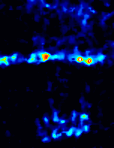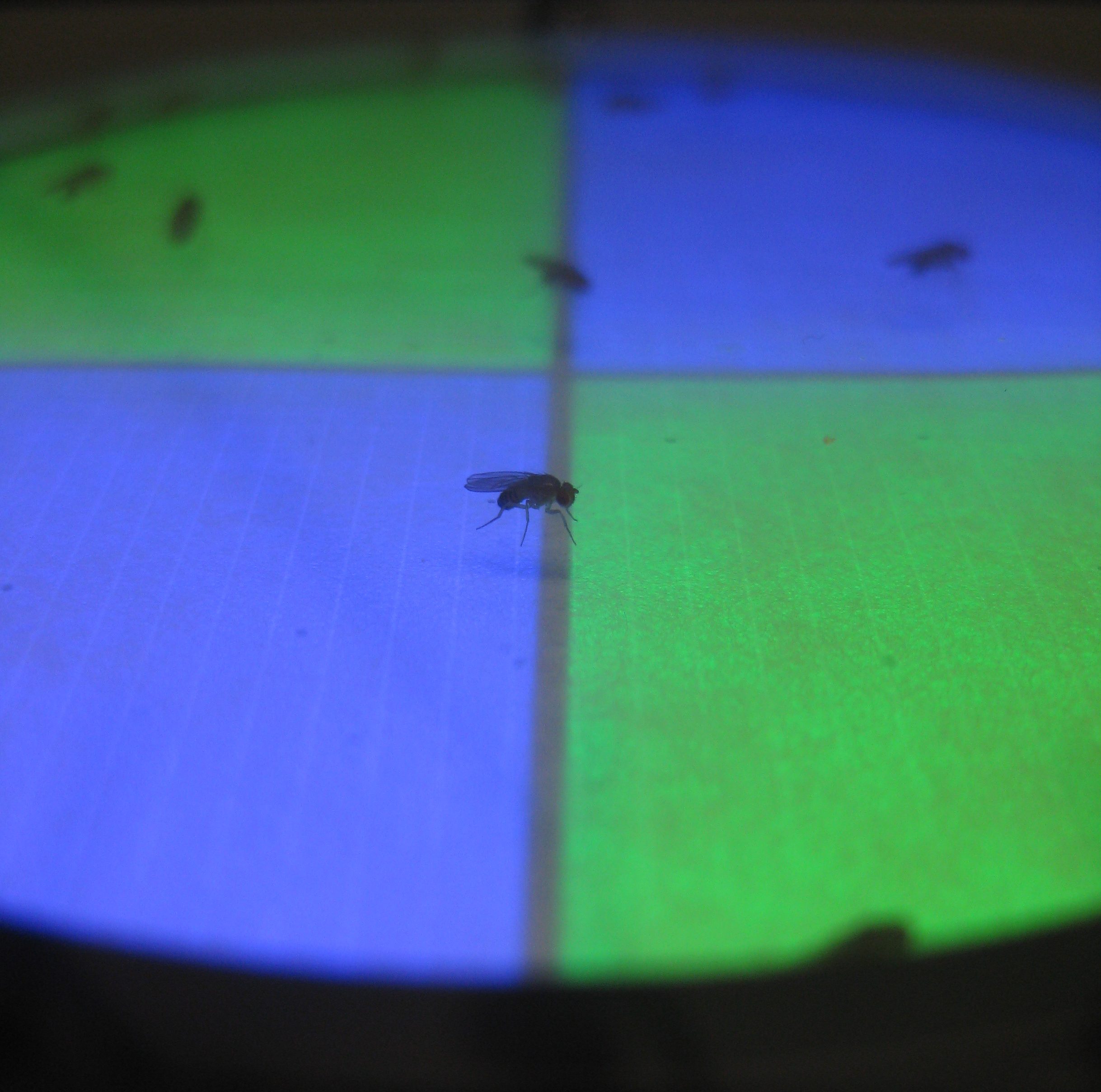Light reaching the retina contains lots of information about the environment, such as the colour of objects, their shape and the direction in which they are moving. All these features have to be computed from photoreceptor signals in subsequent neural circuits to ultimately guide behavioural responses. In our research group, we analyse the microcircuitry of pathways in the visual system underlying colour vision. To understand the computations performed by these pathways and their role in colour guided behaviour, we are studying colour vision in Drosophila. A hallmark of colour vision is the comparison of signals of photoreceptor classes with different spectral sensitivity by colour-opponent neurons. We recently disclosed that such processing, similar as in the mammalian retina, is already implemented in the terminals of so-called inner photoreceptor types in Drosophila. Whether the two distinct photoreceptor-opponencies with UVshort/blue-sensitivity and UVlong/green-sensitivity are conveyed by parallel downstream pathways and what kind of computations postsynaptic neurons implement remains largely unknown. In our lab, we combine neurogenetic tools for manipulation of neural circuits, in vivo two-photon calcium imaging, and colour discrimination assays to address these questions.
Spatio-temporal colour processing in the fly visual system

Using two-photon calcium imaging in neurons expressing genetically encoded calcium indicators in combination with a multi-spectral spatial stimulation adapted to the fly visual system, we analyse colour-processing cell types and reveal their spectral, spatial, and temporal response properties. Guided by connectomic and single cell RNAseq data of the fly visual system, we are genetically manipulating neural activity and gene expression in specific circuit elements. Thereby, we reveal how complex physiological properties of neurons like spatial receptive fields are shaped by the interaction of individual cell types and identify the underlying molecular mechanisms.
Neural circuits mediating spectral preference and colour memory
Colour vision plays an important role in the ecology of many insects and underlies the remarkable co-evolution of pollinators and flowering plants. Like many dipterans, Drosophila can discriminate colours in the wavelength range from UV to green. Innate colour preference and colour conditioning with sugar reward or electric shock punishment allow us to analyze which colours can be discriminated. By manipulating gene expression or neural activity with for instance optogenetic tools in a cell type specific manner in the behaving animal, we can reveal the cell types that are involved and their ultimate role. Together with the disclosure of mechanisms mediating colour processing at the circuit level we aim to achieve a comprehensive understanding of colour vision in this model.
